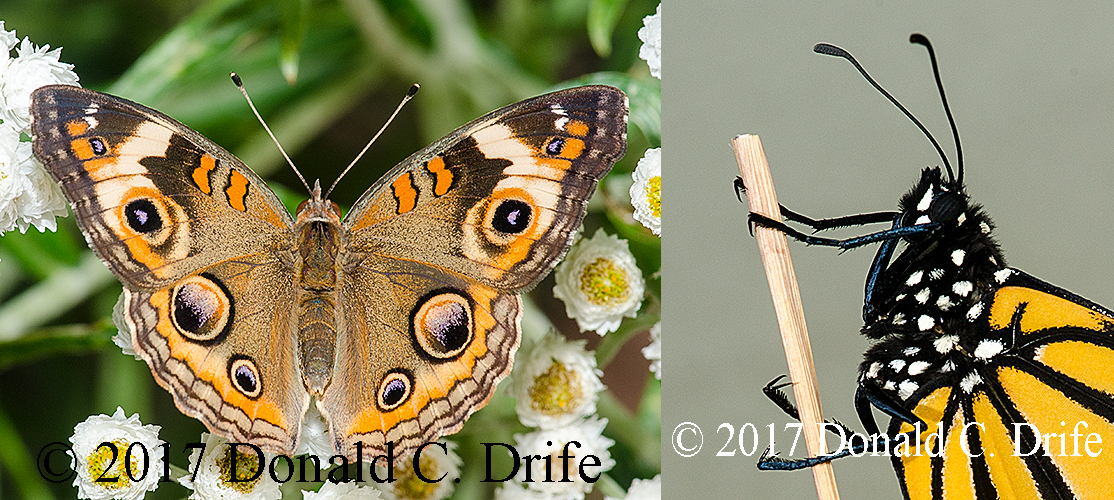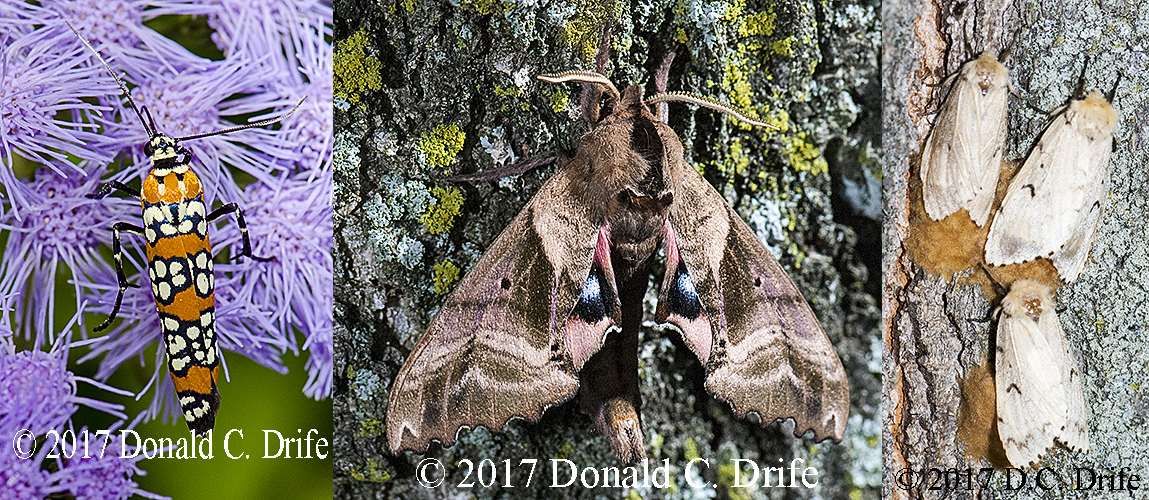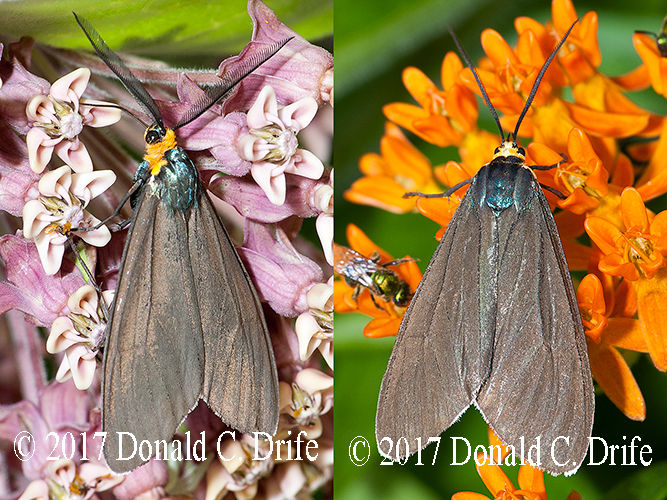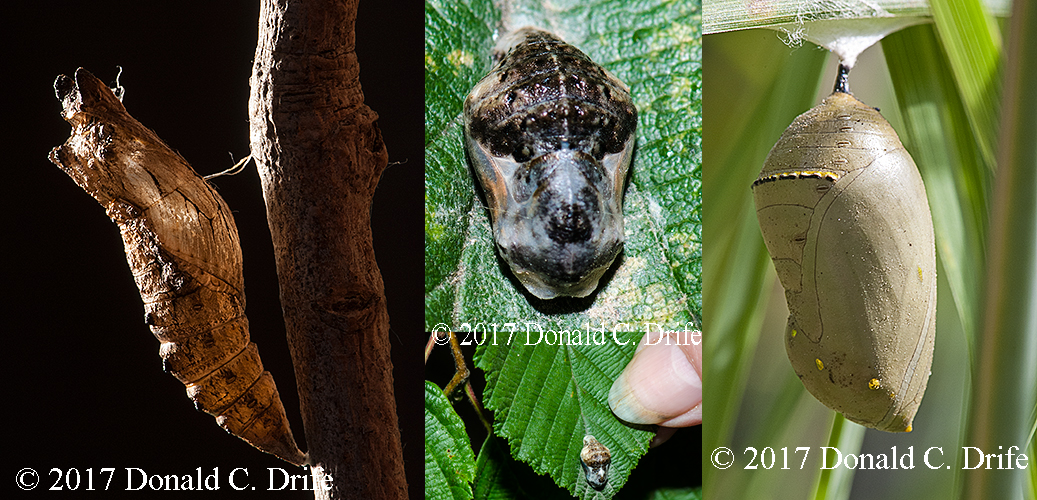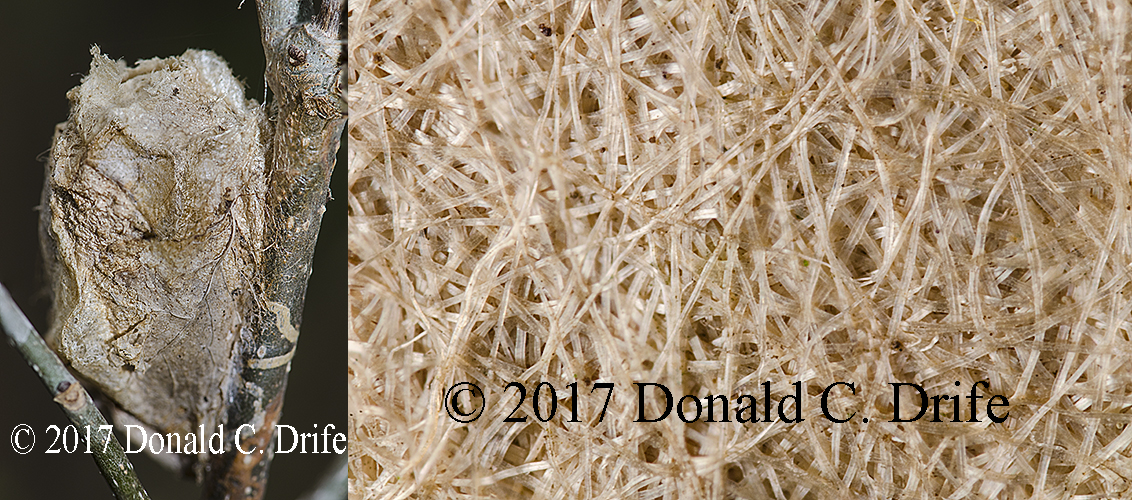Recently I was asked the difference between a butterfly and a moth. They are both in the order Lepidoptera which has 160,000 described species worldwide. Butterflies have 20,000 species and moths make up the rest of the order. North America has 800 species of butterflies and 11,000 species of moths.
Butterflies at rest normally hold their wings upright, pressed together, or opened slightly in a V shape. They have clubbed antennae resembling straight pins. Most butterflies are day flying.
Moths at rest hold their wings flat resembling paper-airplanes. Their forewings are above their hindwings. From above, the wings normally cover their bodies.
Moth antennae are feathery on males and a single undivided filament that tapers to a point on females. Most moths are night flying but several species are day flying moths. Moths also tend to be hairier than butterflies. Many moths do not feed as adults. They emerge, mate, and die in a matter of days. Most adult butterflies eat.
The pupal stage of a butterfly is a chrysalis. The larva sheds its skin and then its outer shell hardens. Moths spin a cocoon of tough fibers.
One of the best internet sources is bugguide.net. It has species pages for all insects not just moths and butterflies. You can submit images for expert identification. I use this site often.
With a little practice it is easy to distinguish a butterfly from a moth. Get out and look before winter sets in.
Copyright 2017 by Donald Drife
Webpage Michigan Nature Guy
Follow MichiganNatureGuy on Facebook

